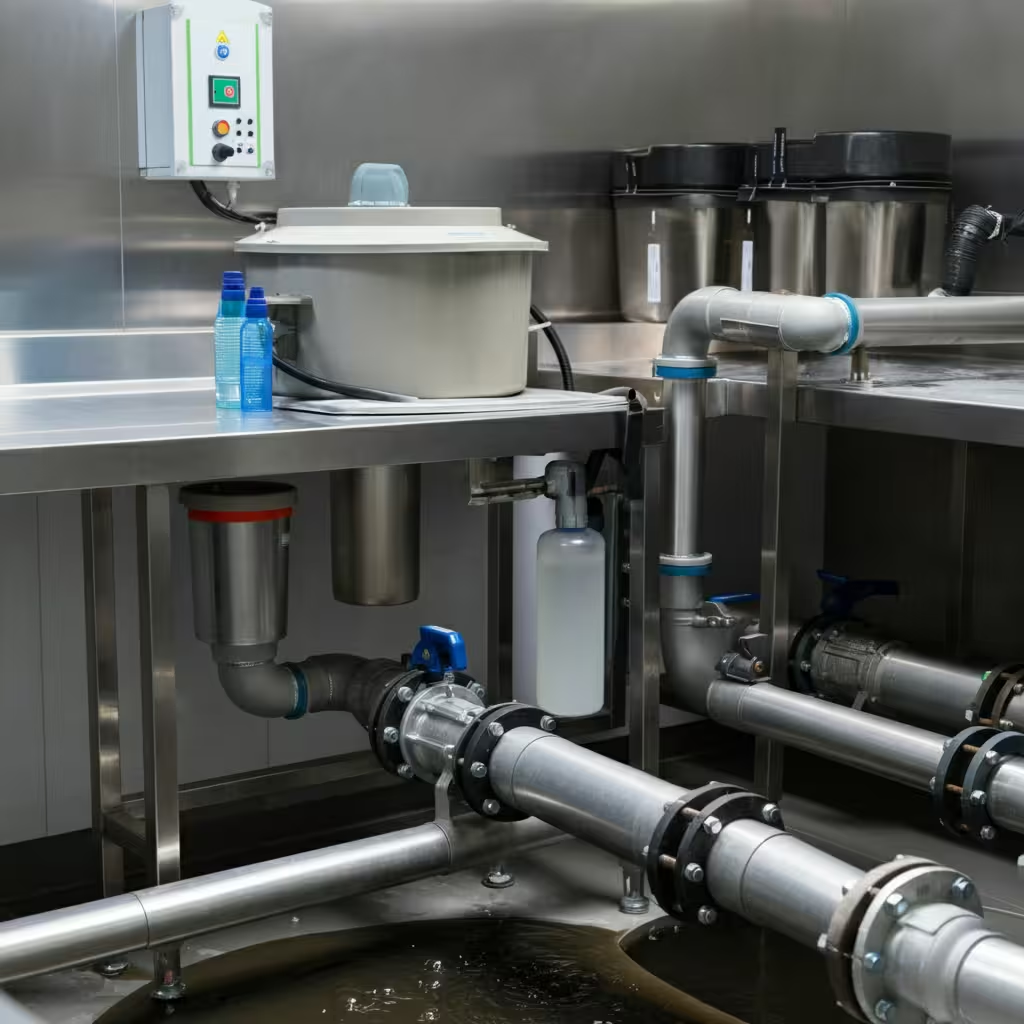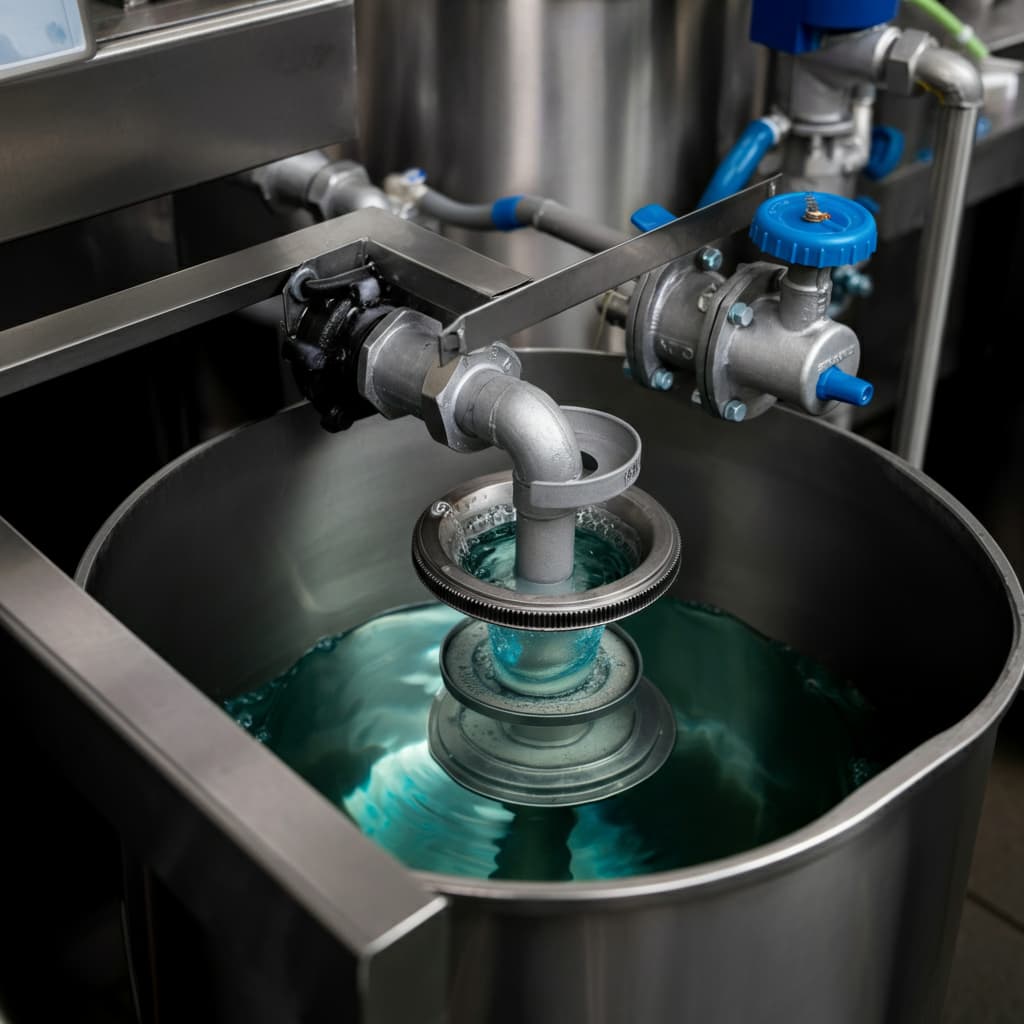In any busy commercial kitchen or industrial food processing facility, the constant output of fats, oils, and grease (FOG) is a given. While these substances are normal byproducts of cooking, their impact can be anything but ordinary. Left unmanaged, FOG can lead to serious plumbing issues, fire hazards, and environmental fines. This is where a dedicated FOG removal system becomes not just a helpful tool, but an essential piece of infrastructure.
Understanding and managing FOG is critical for operational efficiency and safety. This guide will explore what these systems do, why they are so important, and how to choose the right one for your business. We will cover the risks of ignoring FOG and the significant benefits of proactively managing it.
WHAT EXACTLY ARE FATS, OILS, AND GREASE (FOG)?
Fats, oils, and grease are common waste products in any setting where food is prepared.
- Fats: Typically solid at room temperature, fats come from animal products like meat, butter, and lard.
- Oils: Liquid at room temperature, oils originate from plants, such as vegetable, olive, and canola oil used for frying and cooking.
- Grease: This refers to the cooled and solidified fats and oils from cooking processes, often collecting on surfaces and in drains.
When hot, liquid FOG easily washes down the drain with wastewater. The problem begins as the water cools. FOG solidifies and clings to the inside of pipes, creating thick, stubborn blockages that can choke your entire plumbing system.
THE SERIOUS RISKS OF UNMANAGED FOG
Ignoring FOG isn’t just a minor oversight; it’s a significant business risk. The consequences can be costly and damaging to your reputation and daily operations.
CATAOSTROPHIC PLUMBING BLOCKAGES
The most immediate danger of unmanaged FOG is the creation of “fatbergs.” These are massive, solid formations of congealed grease, food waste, and other flushed materials. Fatbergs can completely block sewer lines, leading to wastewater backing up into your kitchen. The result is not only a disgusting mess but also a serious health hazard that forces immediate business closure for cleanup and repairs. The cost of emergency plumbing services to clear these blockages can run into thousands of dollars.
INCREASED FIRE HAZARDS
Grease is highly flammable. When it accumulates in kitchen exhaust systems, hoods, and ductwork, it creates a dangerous fire risk. A simple spark from a cooking appliance can ignite the grease buildup, causing a fire to spread rapidly through the ventilation system. These fires are notoriously difficult to extinguish and can cause devastating damage to your property, equipment, and put the lives of your staff and customers at risk.
ENVIRONMENTAL VIOLATIONS AND FINES
Municipalities have strict regulations regarding the disposal of F-O-G into public sewer systems. When your facility releases high levels of grease, it contributes to blockages and overflows in the city’s infrastructure. This can lead to environmental contamination of local waterways. Water treatment authorities regularly monitor discharge from commercial establishments and will issue hefty fines for non-compliance. Repeated violations can even lead to the suspension of your business license.
FOUL ODORS AND PEST INFESTATIONS
Accumulated FOG begins to decompose, releasing strong, unpleasant odors that can permeate your entire establishment. These smells can drive away customers and create an unpleasant working environment for your staff. Furthermore, the buildup of old grease and food particles is an open invitation for pests like rodents and cockroaches, leading to further health code violations and potential infestations.

HOW DOES A FOG REMOVAL SYSTEM WORKS?
A FOG removal system is an engineered solution designed to intercept and separate fats, oils, and grease from wastewater before it enters the drainage system. While designs vary, most systems operate on the principle that FOG is less dense than water.
The most common type is the grease interceptor, also known as a grease trap. Here’s a simplified breakdown of how it works:
- Interception: Wastewater from kitchen sinks and floor drains flows into the interceptor.
- Separation: Baffles inside the tank slow the flow of water. This allows the heavier food solids to sink to the bottom, while the lighter fats, oils, and grease float to the top.
- Collection: The separated FOG forms a layer at the surface, where it is trapped. The clearer water from the middle layer then flows out of the interceptor and into the sewer line.
Grease interceptors come in various sizes, from small, under-sink units for low-volume kitchens to large, in-ground tanks for high-volume industrial facilities.
THE KEY BENEFITS OF INSTALLING A FOG MANAGEMENT SOLUTION
Investing in the right equipment to manage FOG offers substantial returns by protecting your business from the risks mentioned earlier.
1. ENSURES REGULATORY COMPLIANCE
The primary benefit of a proper FOG removal system is that it keeps you in compliance with local environmental and health regulations. By effectively separating FOG from your wastewater, you avoid the risk of fines and legal troubles associated with illegal discharge. This demonstrates that you are a responsible business operator committed to protecting public infrastructure and the environment.
2. PREVENTS COSTLY PLUMBING EMERGENCIES
By capturing grease before it enters your pipes, you prevent the formation of stubborn clogs and fatbergs. This saves you from expensive emergency plumbing bills, the costs of business interruption, and the potential for property damage from sewer backups. It is a proactive investment in the long-term health of your facility’s plumbing infrastructure.
3. REDUCES FIRE RISK AND IMPROVES SAFETY
A comprehensive FOG management strategy includes keeping your kitchen exhaust system clean. When combined with regular hood cleaning, a good drainage system helps minimize grease buildup throughout the kitchen. This significantly lowers the risk of a dangerous grease fire, protecting your staff, customers, and property.
4. IMPROVES KITCHEN HYGIENE AND SANITATION
Managing FOG effectively helps eliminate the foul odors associated with rotting grease. By preventing blockages and keeping drains clear, you also remove a primary food source for pests. This leads to a cleaner, more hygienic kitchen environment, which is essential for passing health inspections and maintaining a positive reputation.
CHOOSING THE RIGHT FOG REMOVAL SYSTEM FOR YOUR NEEDS
Selecting the appropriate FOG removal system depends on several factors specific to your operation.
- Kitchen Volume and Menu: A high-volume restaurant that does a lot of frying will produce significantly more FOG than a small café. Your menu and cooking methods will determine the amount of grease you need to manage.
- Physical Space: Consider the available space in your kitchen. Smaller kitchens may only be able to accommodate a compact, under-sink grease trap. Larger facilities may require a large-capacity outdoor, in-ground interceptor.
- Local Regulations: Your municipality will have specific requirements for the type and size of grease interceptor needed for your type of business. Always consult with your local water authority to ensure you are compliant.
MAINTENAING YOUR SYSTEM FOR OPTIMAL PERFORMANCE
Installing a system is only the first step. Regular maintenance is crucial to ensure it functions correctly. The captured FOG must be periodically removed and disposed of by a licensed professional. The frequency of cleaning will depend on the size of your interceptor and the volume of FOG you produce. A poorly maintained system is almost as ineffective as having no system at all.
CONCLUSION: A NON-NEGOTIABLE INVESTMENT
For any commercial kitchen or industrial food processing space, managing fats, oils, and grease is not optional. The potential costs of ignoring FOG—from plumbing disasters and fire hazards to hefty fines—are far too high.
A properly installed and maintained FOG removal system is a fundamental component of a safe, compliant, and efficient operation. It protects your plumbing, prevents fires, ensures regulatory compliance, and promotes a cleaner work environment. By investing in the right solution, you safeguard your business’s assets, reputation, and long-term success.

